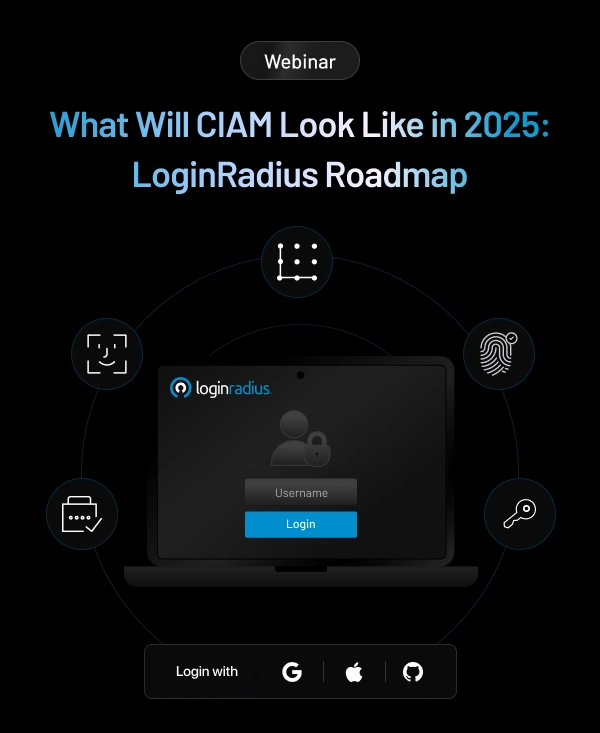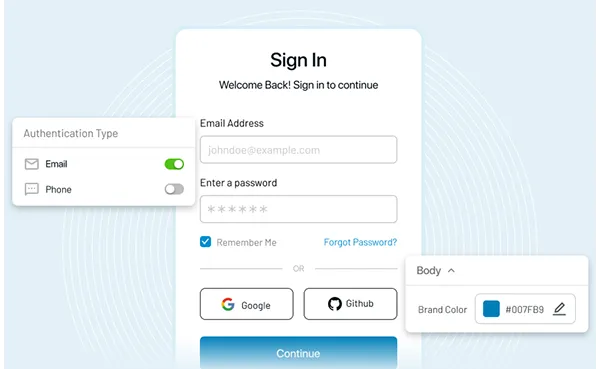Marketing strategies come and go, but there’s hardly a strategy as effective, sustainable, scalable, and cost-efficient as email marketing. Brands have used email marketing for years. But as customer expectations continue to change, brands need to adapt accordingly.
Modern-day consumers love attention. They want to be identified and valued. This has led to the rise of personalization in marketing, and email marketing is no different.
But with brands having hundreds of thousands of subscribers in their email lists, providing personalized consumer experiences can be challenging.
Email automation personalization is a rising marketing approach that enables you to personalize and automate your email marketing simultaneously.
Here’s how you can leverage email automation personalization to make your emails sound more personal and relevant.
Why Is Email Personalization the Cornerstone of Modern-Day Marketing Success?
The chances are that as a marketer, you’re already segmenting your audience and sending them targeted emails. But is that enough?
Making your emails relevant is one thing, and making them interesting and engaging is something completely different. People won’t read your email if they aren’t engaged or feel connected to it. Modern-day consumers want to know “what’s in it for me” before even looking at the brand’s name.
While some established brands have built a loyal customer base, most new and small businesses need to put extra effort into grabbing their target customer’s attention.
Personalization is a powerful tool that can help you engage your audience and nurture your leads. If implemented correctly, it can make your conversations more personal and add a human element to your branding and marketing communications. In fact, personalized email marketing generates a median ROI of 122%.
But what exactly is personalization?
While you’ll find myriad definitions of personalization, let’s stick to the simplest. Personalization is a marketing and communication approach in which you cater to the individual needs of a customer. In a nutshell, personalization is all about making the customer feel that you’re interacting with them and meeting their needs at an individual level.
The scope for personalization is vast. You can start with something as minuscule as addressing the recipient by their first name. Or, you can execute full-fledged email personalization campaigns with personalized offers, QR codes generated via best QR code generator and links to landing pages.
Where Does Automation Come into Play?
Marketing automation brings myriad benefits to your business. For starters, it saves time. Because leads act as the fuel for businesses, collecting more leads has become a priority. But the more leads you gather, the more emails you’ll need to send. And the last thing you want is to manually send a welcome email every time a new user signs up for your newsletter.
Email marketing automation automates the entire process. You can specify a criterion to trigger the email workflow. Moreover, you can select multiple criteria to continuously nurture your leads, increase brand awareness, and explore cross-selling and up-selling opportunities.
Most importantly, it impacts the bottom line. With automation into play, you don’t need a business development or sales team sending cold emails to potential customers. This will save you time, money, and resources.
Besides, email automation can dramatically increase conversion rates. Email automation workflows ensure that all your leads are nurtured, and you don’t miss out on any sales opportunities.
The Challenge with Automation Personalization
Personalization and automation are disparate concepts. And often, brands have a hard time blending the two. Email marketing automation can cause two significant hurdles.
- Overcommunication: First, it can lead to over messaging. When using an email marketing system, going overboard and communicating too frequently with your prospects becomes a possibility. It can also result in repetitive messaging, which can turn off your prospects.
- Depersonalization: Second and most importantly, it can depersonalize your brand. Many companies fail to personalize their automated email campaigns. Not only does this cause low engagement, but it also increases the risk of your emails blending in with spam emails. Marketing Automation Survey by SCRIBD revealed that 61% of marketers are concerned about the lack of personalization due to automation.
To avoid this from happening, brands need to implement the right tools and systems to leverage the benefits of personalization and automation simultaneously.
How to Leverage Email Automation Personalization to Boost Email Marketing Performance?
If you haven’t used automation before, automating your marketing campaigns may seem like a daunting task. But by using the right tools and strategies, you can make it happen.
Let’s look at how you can make your email automation and personalization work together.
Collect as Much Data as Possible
Collecting customer data is the first step in any personalized marketing strategy. When you know your prospects and customers well, you can better cater to their specific requirements.
You can collect data in many ways. When it comes to email marketing, the easiest and most effective way to gather information is by including a sign-up form. Ask for the basic information in the sign-up form to know your customers. But don’t ask too many questions – name and email address are enough. If you want more information, such as location, interests, and preferences, you can ask for it later on.
For example, suppose you want to know where your new subscriber lives, but you don’t want to ask that in the sign-up form. Once the person joins your email list, you can send them an email stating, “Hey John, where are you from?” Similarly, you can ask about their birthday. In fact, birthday emails generate 342% higher conversions than standard emails. So, ensure that you don’t forget your prospects’ birthdays.
You can use QR codes to collect emails from your offline customers. A large share of the population still shops in brick-and-mortar stores. You can connect with these customers by email with the help of email QR codes.
Create a QR code using a QR code generator and link it to your email sign-up form. You can put this code inside your store, on product packaging, or in your advertising materials. Users can use their phones to scan the code and sign up for your email newsletter. QR codes are highly trackable. When users scan the code, you can collect information such as location, device, etc., to better understand your customers.
Read More: LoginRadius launches QR-code-based authentication for hassle-free log in
Once you have developed a rapport with a prospect, you can ask for information through surveys and feedback emails. Surveys can be effective in knowing your customers better and understanding their requirements.
Set Triggers and Rules
Now that you have an email list and basic information about your prospects, it’s time to kickstart your email marketing campaign. To do that, you’ll need to have an email marketing platform in place.
All email automation solutions support triggers. You can choose a trigger that’ll automatically send an email to the subscriber. For example, a trigger can be “A subscriber signs up for the email list” or “A subscriber makes the first purchase.” You can link specific email messages with each trigger. Once you set a trigger and a subscriber takes that action, your email platform will send an email associated with that trigger.
Here’s a great example from an automated welcome email from Healthline, a health information provider.

Image Source: Healthline
Setting up triggers is great, but not enough. If you want to truly personalize your email marketing, you’ll need to send emails based on customers’ actions. Here’s where rules come into play. Rules are a set of criteria that a customer should meet. Once they meet the requirements, an automated email will be sent to them.
For example, Sephora, a cosmetics and personal care brand, sends an email providing a 20% discount to customers who shop for more than $200.

Image Source: Sephora
Use Dynamic Text
The key to succeeding with personalized automation is to keep things simple. For example, merely adding the subscriber’s first name in the subject line and email body can go a long way in boosting click-through rates and engagement. Emails with personalized subject lines achieve 50% higher open rates.
You can implement dynamic text to add the subscriber’s name in the email subject line and body. Dynamic text changes as per the information provided by the subscriber. Almost every email marketing platform supports dynamic text functionality.
Create Personalized Content
We’ve arrived at the most crucial step of email automation personalization – creating content. The purpose of personalization is to eliminate the one-fits-all approach from your email marketing. To do that, you’ll need to create content that serves different types of prospects and customers.
For instance, you’ll need to send different emails when a customer:
- Joins your list
- Makes their first purchase
- Spends a certain amount of money
- Has been with you for one year, two years, etc.
- Is celebrating their birthday
Furthermore, if you cater to different customer types, you’ll need to segment them and create unique content for each segment. For example, suppose you’re a clothing store that sells clothing and apparel for both men and women. In that case, you might want to create different email content for your male and female customers.
Use the Right Integrations
Connect your email marketing platform with other tools in your marketing stack, such as CRM, social media management software, etc. Most solutions nowadays support native integrations. If not, you can use integration enablers like Zapier or Coupler.io. This way, you can integrate your email marketing with other marketing campaigns to create a unified marketing environment.
Keep Personalizing
There’s no limit to personalization. You can personalize the entire customer journey and all touchpoints to create a hyper-personalized experience for your users. This means you can begin delivering personalized experiences when a customer joins your email list and continue personalizing their experience throughout their journey.
How Does Email Automation Personalization Increase Revenue?
In the end, it’s all about the bottom line. Here’s how automation and personalization of email marketing can increase sales and revenue.
Laser-Focused Customer Targeting
You must’ve heard that email marketing can generate an ROI of up to 4400%. However, to achieve these kinds of results, you need to make sure you target the right consumers. They should be willing to hear from you.
However, that isn’t the hard part. It’s easy to figure out which customers are looking forward to your emails. Things get tricky when you scale up. For example, Healthline has 31 newsletters, and they create unique content for each newsletter at least once a month. For popular ones, the frequency is weekly or even daily. This way, they can personalize their consumers’ experiences.
Imagine sending consumers from each list one email at a time, manually. How time-consuming it’d be. With marketing automation, they automate the entire process, and you can do the same, even if you haven’t scaled like Healthline. With automation personalization, you deploy actions based on customer data and actions to give your subscribers exactly what they need.
Increased Relevancy
Again, marketing automation poses the risk of overcommunication. Lack of relevancy can make your subscribers lose interest in what you have to say. Here’s where hyper-personalization comes into play. Based on the rules you implement, you can make your emails highly relevant. And when you send more relevant emails, your emails are more likely to drive engagement and inspire action.
Customer Retention and Loyalty
A survey conducted by Havas Media discovered that people wouldn’t care if 74% of brands disappeared. This clearly shows that not only is customer loyalty crucial, but it’s challenging to achieve.
Marketing personalization can make things easier for you. When you deliver personalized experiences, customers feel special, recognized, and valued. This encourages them to stay loyal to your brand.
Final Thoughts
Personalizing emails isn’t a choice anymore for brands. Customers expect you to understand their requirements and fulfill them. And doing that at scale can be challenging. However, by blending personalization with automation, you can deliver personalized experiences to all your customers.
This can help your brand in two ways. First, it can reduce your costs and increase your marketing efficiency. And second, it can make your marketing more personal, relevant, and effective, resulting in better engagement and more customers.
















